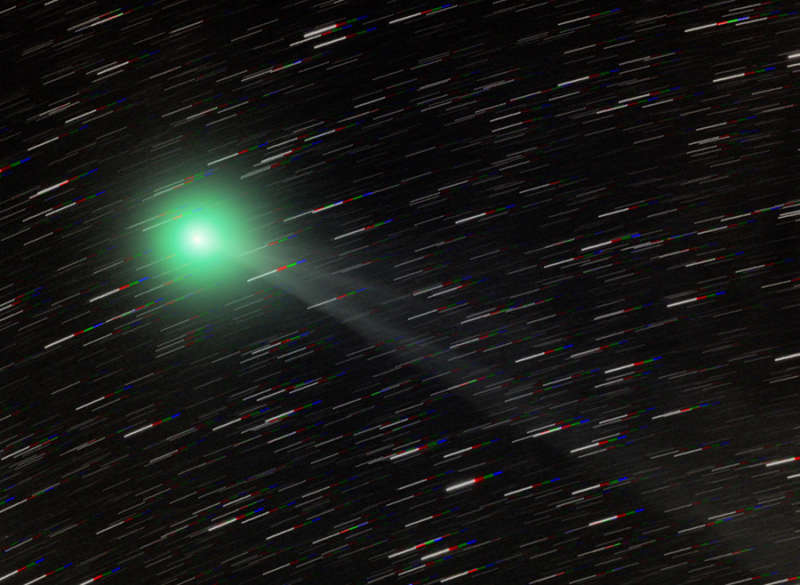
|
Credit & Copyright: Peter Ward (Barden Ridge Observatory)
Explanation:
Currently sweeping through southern skies,
Comet
Lemmon (C/2012 F6) was
named for its discovery last year as part of the Mount Lemmon (Arizona)
Survey.
Brighter than expected
but still just below naked-eye
visibility, Comet Lemmon sports a stunning lime green
coma
and faint
divided tail in this telescopic
image from
February 4.
The greenish tint comes
from the coma's diatomic C2 gas fluorescing in sunlight.
Captured from an observatory near Sydney, Australia, the color composite
is constructed from a series of individual exposures registered on the
comet.
Across the 1 degree wide field of view, the star trails are a
consequence of the comet's relatively rapid motion against the
background of stars near the
South Celestial Pole.
Moving north, the
comet should grower brighter, reaching a peak (3rd magnitude or so)
when it is
closest
to the Sun in late March.
By early April it should be visible from the northern
hemisphere.
Of course, this year Comet Lemmon may be just another pretty
comet as skygazers on planet Earth
also eagerly anticipate views of
Comet PANSTARRS and
Comet ISON.
|
January February March April May June July August September October November December |
| ||||||||||||||||||||||||||||||||||||||||||||||||
NASA Web Site Statements, Warnings, and Disclaimers
NASA Official: Jay Norris. Specific rights apply.
A service of: LHEA at NASA / GSFC
& Michigan Tech. U.
Based on Astronomy Picture
Of the Day
Publications with keywords: comet
Publications with words: comet
See also:
- APOD: 2025 September 30 Á Comet Lemmon Brightens
- APOD: 2025 September 29 Á Two Camera Comets in One Sky
- APOD: 2025 September 26 Á A SWAN an ATLAS and Mars
- APOD: 2025 September 18 Á Comet C/2025 R2 SWAN
- APOD: 2025 September 16 Á New Comet SWAN25B over Mexico
- APOD: 2025 July 7 Á Interstellar Comet 3I ATLAS
- Comet C/2025 F2 SWAN
